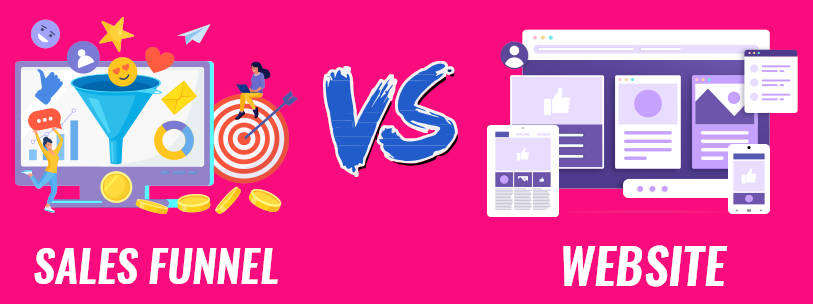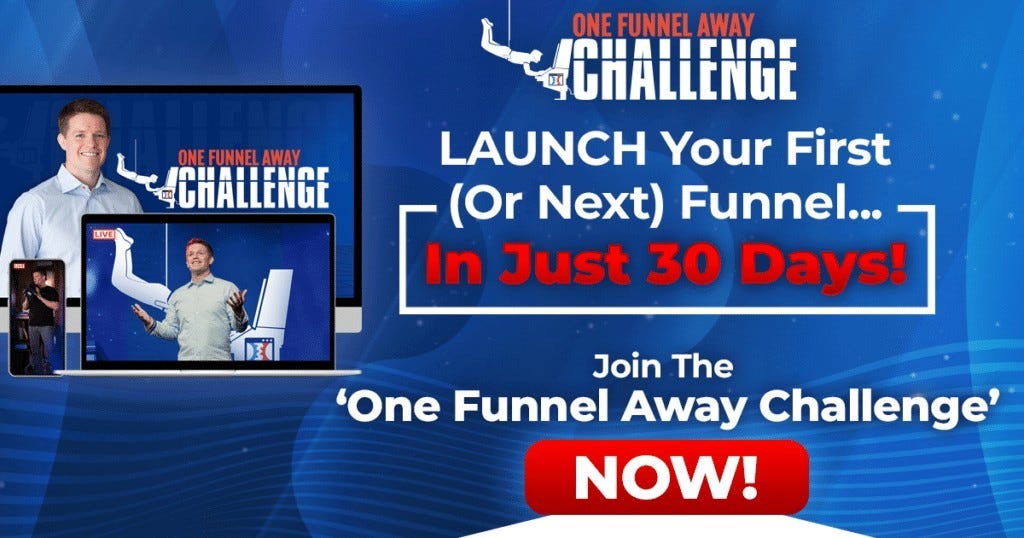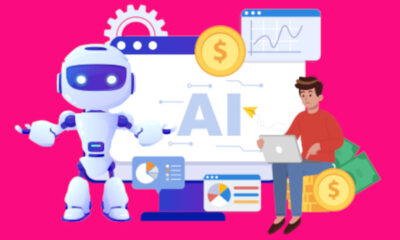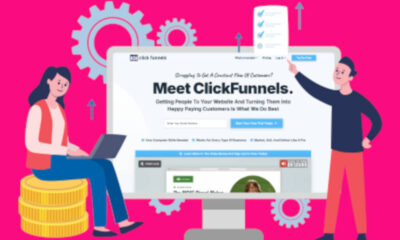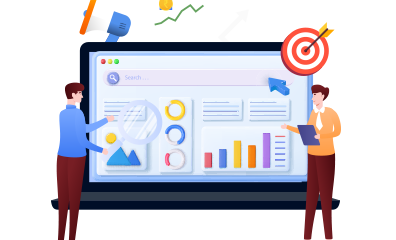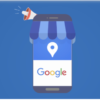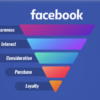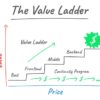Email Marketing
A Candid Comparison of Sales Funnels and Websites
In the bustling digital world, the battle between sales funnels and websites rages on. Once upon a time, websites were the crown jewels of online presence—simple, static, and purely informational. They served as virtual brochures in a print-dominated universe, marking the nascent stages of our digital evolution. But as the internet matured, so did websites. They became dynamic, interactive, and complex, evolving into sophisticated hubs of activity. Yet, amidst this transformation, somewhere along the way, they lost their way. Enter the sales funnel, a streamlined, focused, and effective alternative that’s changing the face of online business. But where lies the true power? Is it in the traditional website or the modern sales funnel?
The Evolution of Websites From Print to Digital
Websites started as simple digital extensions of businesses, providing basic information like contact details and operating hours. They were novel and exciting, offering a glimpse into the future of communication. But as technology advanced, websites grew more complex. They incorporated e-commerce, multimedia, social media integration, and more, transforming into all-encompassing digital destinations. This evolution, fueled by browser advancements, brought about major shifts in the online landscape, from the rise of e-commerce giants like Amazon to the explosion of social media platforms. Yet, with this growth came complexity, and many businesses struggled to capture visitors’ attention amidst the clutter.
The Modern-Day Website A Cluttered Maze of Choices
Fast forward to today, and websites have become labyrinths of information and choices. They bombard visitors with options, links, and distractions, often leading to frustration rather than engagement. This overwhelming array of choices can leave users feeling lost, like navigating a maze with no clear exit in sight. For businesses, this means missed opportunities and potential customers slipping through the cracks. In this cluttered digital landscape, the need for a more focused, streamlined approach became apparent, paving the way for the rise of sales funnels.
The Rise of Sales Funnels A New Era of Focus
Sales funnels emerged as a response to the chaos of traditional websites. Unlike their counterparts, sales funnels offer a direct path to conversion, guiding visitors through a carefully curated experience. Imagine being on a road trip, but instead of endless forks and detours, there’s only one clear route leading straight to your destination. That’s the magic of sales funnels—they eliminate distractions, provide clear direction, and ensure that every step is optimized for conversion. For entrepreneurs and businesses, this means higher engagement, better conversion rates, and ultimately, increased revenue.
Sales Funnel vs Website What’s the Difference
The core difference between sales funnels and websites lies in their purpose and structure. While websites aim to provide comprehensive information, sales funnels focus on guiding visitors toward a specific action, whether it’s making a purchase, signing up for a newsletter, or booking a consultation. This fundamental distinction shapes every aspect of their design and functionality.
Direction Streamlined Pathways to Success
Sales funnels excel in providing clear direction. Every element within a funnel is strategically designed to lead visitors down a predetermined path, reducing decision fatigue and increasing the likelihood of conversion. In contrast, traditional websites often leave visitors to wander, unsure of what action to take next. This lack of direction can result in high bounce rates and lost opportunities.
Process Guiding Through Intentional Steps
A sales funnel breaks down the customer journey into intentional stages, each with a specific goal. From awareness to consideration to conversion, every step is carefully crafted to nurture leads and guide them toward becoming loyal customers. Websites, on the other hand, lack this structured approach, often leaving visitors to fend for themselves in a sea of information.
Structure Focused Design for Maximum Impact
The design of a sales funnel revolves around a single goal, whether it’s selling a product, capturing leads, or driving sign-ups. This focused approach ensures that every element serves a purpose, from attention-grabbing headlines to persuasive call-to-action buttons. In contrast, websites often try to do everything at once, resulting in a scattered layout that dilutes their impact.
The Impact on Results Achieving Higher Conversions
Sales funnels have a proven track record of delivering higher conversion rates compared to traditional websites. By eliminating distractions and guiding visitors through a seamless process, they increase the likelihood of turning prospects into paying customers. This focused approach not only boosts sales but also enhances customer satisfaction by providing a smooth and hassle-free experience.
Revenue Maximizing Returns on Investment
For businesses, the ultimate goal is to drive revenue and achieve a positive return on investment. Sales funnels excel in this regard by optimizing every step of the customer journey for maximum impact. Whether it’s upselling additional products, offering limited-time promotions, or nurturing leads with targeted follow-ups, sales funnels are designed to maximize revenue opportunities at every turn. In contrast, traditional websites often struggle to convert visitors into paying customers, resulting in missed revenue potential.
Offers Tailored Solutions for Every Visitor
Sales funnels allow businesses to tailor their offers based on customer behavior and preferences. By analyzing data and segmenting audiences, businesses can deliver personalized experiences that resonate with each visitor. This level of customization not only increases the likelihood of conversion but also enhances customer satisfaction and loyalty. Traditional websites, on the other hand, often deliver generic messages that may not resonate with individual visitors, resulting in lower engagement and conversion rates.
Psychological Leveraging Persuasion Techniques
Sales funnels leverage psychological principles to guide visitors toward desired actions. Techniques such as scarcity, social proof, and urgency are strategically employed to create a sense of excitement and drive conversions. By tapping into the human psyche, sales funnels effectively influence decision-making and increase the likelihood of achieving desired outcomes. Traditional websites, with their lack of focus and direction, often fail to capitalize on these powerful persuasion techniques.
Are Sales Funnels Hard to Build
Building a sales funnel may seem daunting, but with the right tools and resources, it can be a straightforward process. Many platforms offer user-friendly interfaces and pre-designed templates that simplify the creation of sales funnels. Additionally, there are numerous online courses and tutorials available that provide step-by-step guidance for building effective funnels. With a little investment in time and effort, businesses can unlock the potential of sales funnels and reap the rewards of higher conversions and increased revenue.
What are the Stages of a Sales Funnel
A typical sales funnel consists of several stages, each designed to guide visitors through the customer journey:
- Awareness – This is the stage where potential customers first become aware of your brand or product. It involves capturing their attention through targeted marketing efforts such as social media ads, content marketing, or search engine optimization.
- Interest – Once you’ve captured their attention, the next step is to generate interest in your offerings. This can be achieved through engaging content, informative webinars, or persuasive landing pages that highlight the benefits of your product or service.
- Consideration – At this stage, potential customers are evaluating their options and considering whether to make a purchase. It’s important to provide them with all the necessary information, testimonials, and case studies to build trust and address any concerns they may have.
- Conversion – The conversion stage is where the magic happens. It’s the point at which potential customers take the desired action, whether it’s making a purchase, signing up for a free trial, or requesting a consultation. This stage should be seamless and frictionless, with clear calls-to-action and a user-friendly checkout process.
- Retention – The sales funnel doesn’t end with the conversion. It’s important to nurture relationships with existing customers to encourage repeat business and foster loyalty. This can be achieved through personalized follow-up emails, exclusive offers, and exceptional customer support.
Conclusion Navigating the Digital Landscape with Confidence
In the ever-evolving digital landscape, understanding the differences between sales funnels and websites is crucial for businesses looking to thrive online. While websites have their place, sales funnels offer a focused and efficient approach to driving conversions and maximizing revenue. By providing clear direction, structured processes, and personalized experiences, sales funnels unlock the true potential of online businesses. With the right tools and strategies, businesses can harness the power of sales funnels to achieve their goals and stay ahead in the competitive digital marketplace.
>>>Join The One Funnel Away Challenge<<<


